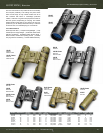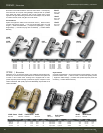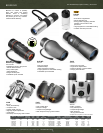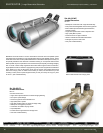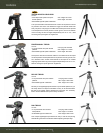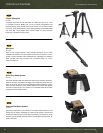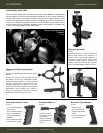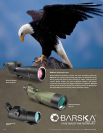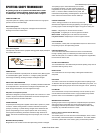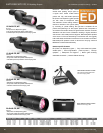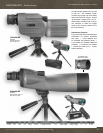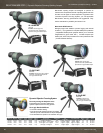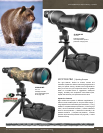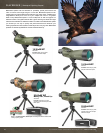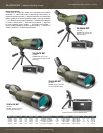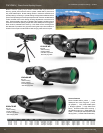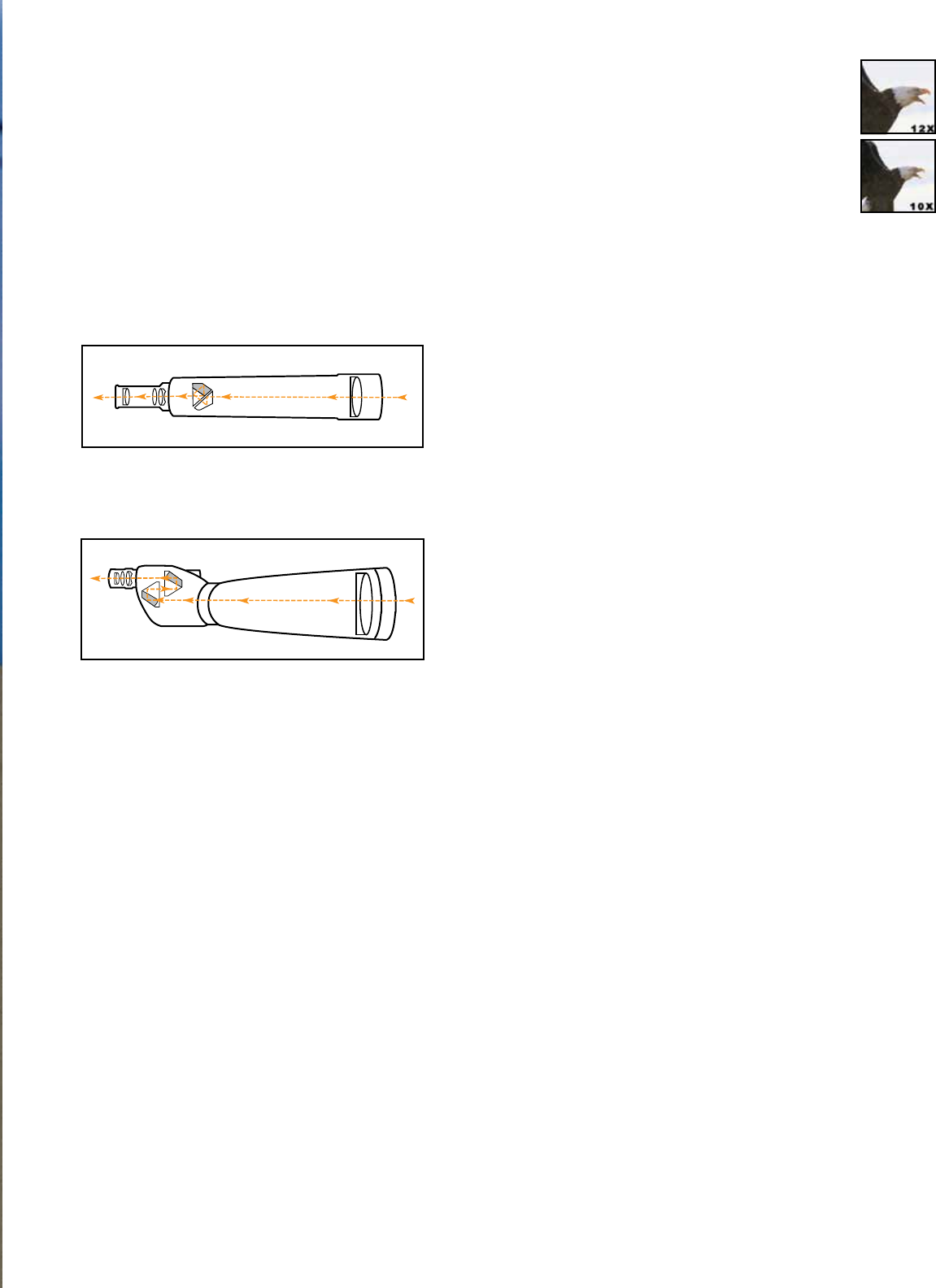
PRISM SYSTEM/TYPE
The prism system of a spotting scope reduces the size of a long optical
path and correct an inverted image.
Roof Prism System
The prisms overlap and are aligned in a straight line with the lenses
allowing to have a slim construction.
Porro Prism System
The objective is offset from the eyepiece offering greater depth perception
and a wider eld of view.
PRISM GLASS
The common standards of optical prisms are barium-crown (BAK-4) glass
or borosilicate (BK-7) glass. The BAK- 4 is a higher quality glass that
reduces light scattering, resulting in sharper and brighter images.
OBJECTIVE LENS DIAMETER
The second number in the reference (i.e. 20-60x60) indicates the diameter
of the objective lens or the front lens. The larger the objective lens, the
better the light transmission, thus the brighter the image.
ED (Extra Low Dispersion) Glass
ED Glass is designed to provide precise optical color correction. It is multi-
coated to improve contrast and transmission across the visual spectrum
and provides reduced chromatic aberration.
PHASE COATING
A special optical coating that is applied onto the BAK-4 prisms for “phase-
correction”. Phase coating results in maximum resolution and optical
quality by correcting or “phase shifting” the light that is reected off the
prisms and optimizing it for the scope’s aperture size. Thus reducing
internal glare and delivering enhanced contrast and high resolution of
details. The results are extreme bright and crisp images, and a true color
delity.
MAGNIFICATION (POWER)
Magnication is the number of times the object being viewed is enlarged.
SPOTTING SCOPE TERMINOLOGY
A spotting scope is an optical instrument that is used
for spotting or viewing distant objects such as wildlife
or landmarks. It is usually high powered but compact.
w w w . b a r s k a . c o m
The spotting scope is often identied by two numbers,
for example: 20-60x60. The rst number indicates the
magnication or the power of the scope, expressed by the
letter “x”, for times. With this variable zoom power, that
means that the object being viewed appears to be 20 to 60
times closer than would be seen with the naked eye.
OPTICAL COATINGS
Various coating processes on the lenses and prisms will
determine the brightness and the light gathering of a spotting scope,
providing higher contrast and brighter images. The types of coating are:
Coated - A single layer on at least one lens surface.
Fully Coated - A single layer on all air-to-glass lens surfaces
Multi-Coated - Multiple layers on at least one lens surface.
Fully Multi-Coated - Multiple layers on all air-to-glass surfaces.
FOCUS SYSTEM
The mechanism, usually with a turn-adjustable knob, that is used to focus
the spotting scope on the object being viewed.
FIELD OF VIEW (F.O.V.)
This is the side-to-side linear measurement of the circular eld seen
through a spotting scope. It is dened by the width in feet of the area
visible at 1000 yards, or in meters at 1000m. The higher the magnication,
the narrower the eld of view.
CLOSE FOCUS DISTANCE
The closest distance to the observed object that the spotting scope can be
used while retaining a sharp focus.
RESOLUTION
The measurement of the scope’s ability to distinguish ne detail and
sharpness.
EXIT PUPIL
This refers to the size of the small disc of light that exits a spotting scope.
To determine the size, divide the objective lens diameter by the power. For
example a 20x60 spotting scope will have an exit pupil of 3mm. (60/20=3)
EYE RELIEF
This is the distance a scope can be held away from the human eye and
can still observe the entire eld of view. Long Eye Relief (LER) reduces
eyestrain and is more comfortable for eyeglass wearers.
WATERPROOF/FOGPROOF
Spotting scopes can be O-ring sealed for complete waterproof protection,
and fogproof which means that they are nitrogen-purged to prevent
anti-fogging inside the optical surfaces. These models are able to keep
completely dry inside after immersion in water.
Spotting Scope Limited Lifetime Warranty
(Within USA and Canada only)
This warranty does not cover consumer-caused damages, abuse, normal
wear-and-tear, unauthorized repairs or modications. For further detailed
information, please refer to the warranty policy enclosed with products.
2011 BARSKA Sport Optics Catalog
For detailed product specifications and images visit: www.barska.com
65



